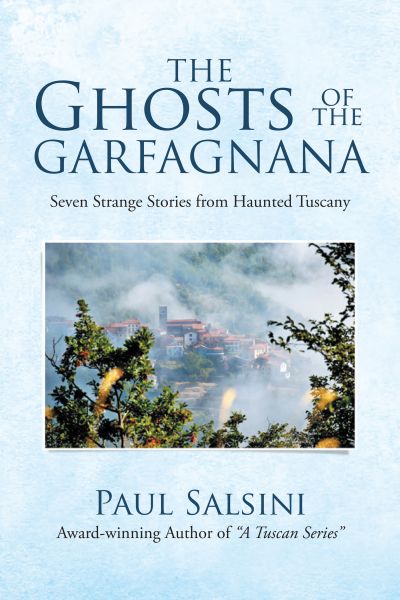The northwestern tip of Tuscany stretches into the Apuan Alps, a mountain range of steep jagged peaks and hazy valleys woven with underground tunnels and caves. Within these mountains, the Garfagnana is known as a region shrouded with mysterious and supernatural events.
It was a bridge built by the devil that first caught Paul Salsini’s attention. Then he heard about a mountain where witches practiced their craft and was told about the sounds of a church bell from a village at the bottom of a lake. Paul had visited the northwest region of Tuscany numerous times, both of his parents are from the small town of San Martino in Freddana, and he has written a series of books about the region, but these unusual incidences brought thoughts of a new book.
“The Ghosts of the Garfagnana: Seven Strange Stories from Haunted Tuscany” is a collection of stories that take place in that region but spans across almost 800 years. “The First Miracle,” set in 1225, brings the monks of a monastery together to learn some good news and introduces a “gentile” apparition. The second story picks up almost 155 years later with details of life at the monastery and how an unseemly prank brings surprising results.
The third story, “The Miraculous Statue,” also takes place at the monastery from 1379 to 1760 with a focus on shrines, pilgrimages, miracles bestowed, and what sometimes happens after a miracle is granted. A description of the workings of a monastery during the Middle Ages, especially the scriptorium, adds depth to the first three stories:
“‘The only way we can acquire a large quantity of books,’ Abbot Nicolo said, ‘is to copy them and that’s what we’ll do here in the scriptorium.’ The spacious room was filled with light from four windows stretching almost from marble floor to vaulted ceiling. Sixteen writing desks were lined against the windows. Shelves underneath contained pens and colored inks.”
Italy was in the midst of another upheaval in 1860 and “A Friendship Shawl” is the story of one of Garibaldi’s Redshirts returning home to a welcoming family and community, but unable to accept any commendation. Conflicted, he turns to an unlikely source to find peace from his inner turmoil.
In 1944, in the midst of yet another upheaval, the people of the Garfagnana hear war all around them. Hostile troops on the ground, the Allies flying above, the monastery still stands. “They climbed to the scriptorium, where beautiful handmade jewel-encrusted books still stacked the shelves. ‘In the Middle Ages,’ Tonio said, ‘teams of monks copied these books letter by letter, word by word.’” In the fifth story, “A Crystal Ball,” two orphans are separated; one to a convent, the other to the monastery. Both, inadvertently, become involved in an attempt to thwart the approaching German army.
The last two stories take place within the past few years. In one, a family visit to the region takes them back to medieval times in a tale interspersed with the history of the area: “First came the Visigoths, one of the nomadic tribes that roamed Europe during the late Roman Empire. The Lombards…fought the Visigoths; the Franks fought the Lombards. Then, in the tenth century, an imperial family, the House of Canossa, gained dominance over the Garfagnana…” The dynasty includes Matilda of Canossa, “one of the few medieval women to be remembered for her military accomplishments…she oversaw dozens of battles to secure her land holdings and also found time to build some one hundred churches, monasteries and bridges between the Alps and Rome.”
In “Behind the Curtain,” the final story in this collection, a doubtful college student travels to the Garfagnana to research ghosts in the theater and stays at the monastery where he learns about acceptance.
Each story, on its own, is an intriguing read, but in succession, the stories in “The Ghosts of the Garfagnana” present an ongoing account of spiritual occurrences intermingled with highlights of the region’s history and geography and supplemented with the personalities of the characters.



